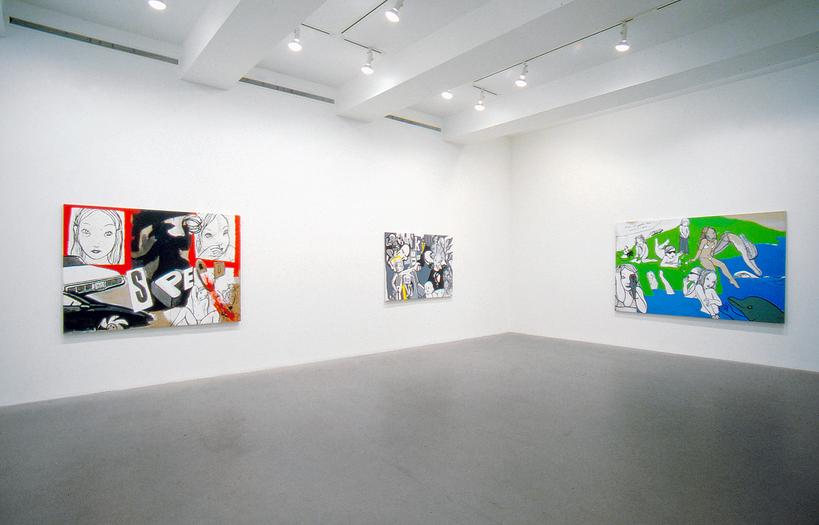Rita Ackermann
After Dinner I'm Gonna Shoot You But Before I'll Take a Shower
July 8 – August 12, 1994
Main Gallery
"Genius is no more than childhood recaptured at will," Baudelaire once wrote, comparing the keen sensitivity of the modern painter to the eternal curiosity of a "man-child". In this sense, Rita Ackermann is also a perpetual adolescent, and not just because her work seems to depict various scenes in the life of a girl-child or waif. She is adolescent in the etymological sense of the word, which means to be kindled or to burn. Youth is a combustion engine: it transforms fire into speed, and that's why Rita's characters often appear to be living life in the fast lane, dancing, romancing, flirting with drugs, mixing and matching multiple personalities as though they were retro clothes (sometimes a girl's vulnerable as a little kid, other times self-consciously seductive, like on a first date, still other times she's as arch as a raised eyebrow and impish as a suppressed grin). But then there are days when the fast lane takes them straight to paradise regained, where they slow down, conserve energy, frolic in the grass, and play with animals, as though these were moments of a happy or idyllic childhood able to be recaptured at will.
OR
As a third party said when we were talking about Rita's work:
"...she doesn't really like to admit this, for some reason - every figure Rita draws begins with an emotion. Have you ever noticed how when she talks about them, she says things like "Oh, this one, she's sad because she broke up with her boyfriend. But that's ok. It's nice sometimes to feel sad, isn't it?" And I was thinking about how I love that but at the same time find it really disarming, since I always begin writing with an idea, never an emotion. Then I felt really inadequate, since I have zero idea how to communicate an emotion... That's why I identify with Sade but admire Fitzgerald. I could write 120 Days of Sodom in a month, but I couldn't write The Crack-Up in a thousand years."
